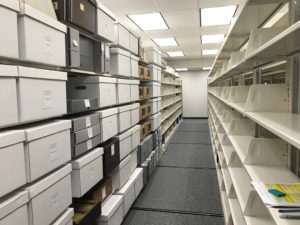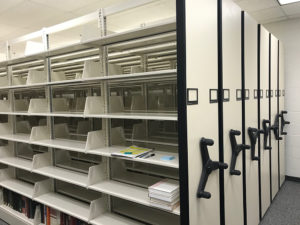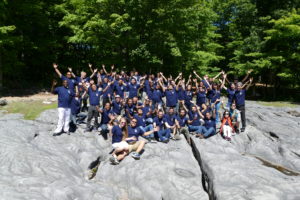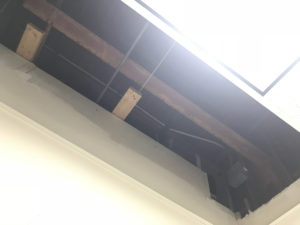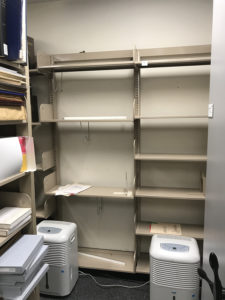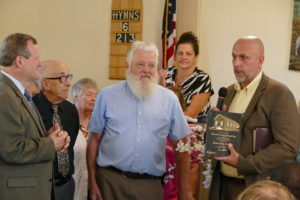A huge thank you goes to University administration and the Library for working together to provide a wonderful new storage area for the Center. During a walk through looking at space options, the Provost and Plant Administrator, Christon Arthur and Paul Elder, along with Library Dean, Larry Onsager, came upon the under-utilized space outside of CAR “back door,” in the library’s Periodical Department. At the time it was used for the storage of shelf pieces. It was decided to work towards turning this space into additional CAR storage space.
Over time, the Center, with the backing of the Provost, was successful in securing funding from the University’s Capital Expenditures Committee for the installation of a new compact shelving system. We were able to find a bid at about half of previous bids for the same job. Story short, in July 2018 new walls went up in that part of the Library, and on August 6, the installation of a new Space Saver™ compact shelving system began.
As of October 30, 2018, the room was finally completely finished and ready for use.
The space is 800 ft2, which does not sound like much. But it is all new space for CAR and that is the important part. With the investment in a quality compact shelving system we have 3,597 linear feet of new storage. Looking at it another way, we have space for 2,368 of our large storage boxes.
We will use this new space primarily for manuscript collections (personal papers of individuals) and the University Archives. We will likely also allocate some space for more “remote” storage of little used resources now held in the closer shelves.
This new space takes pressure off in some areas. We are now positioned to more easily accept several larger collections of personal papers we know are coming at some point. We still have, however, a very old electronic compact system in our vault that still operates due to God’s blessings. There are two other areas where a compact system would enhance our utilization of space. For now we are in good shape, but our collection continues to grow as we fulfill our mission.
We still have a doctor’s office-size compact shelving system waiting in a storage trailer to be installed. The only cost to us will be labor for installation. We hope to install it in our collection processing room—Room 170. It is not large enough to make much of an impact in our general stacks area, but in a limited space, such as the processing area, it will indeed make an impact. To this point we’ve been stymied by the need to move a fire alarm and by a lack of money/time from Plant Service to do the work.

